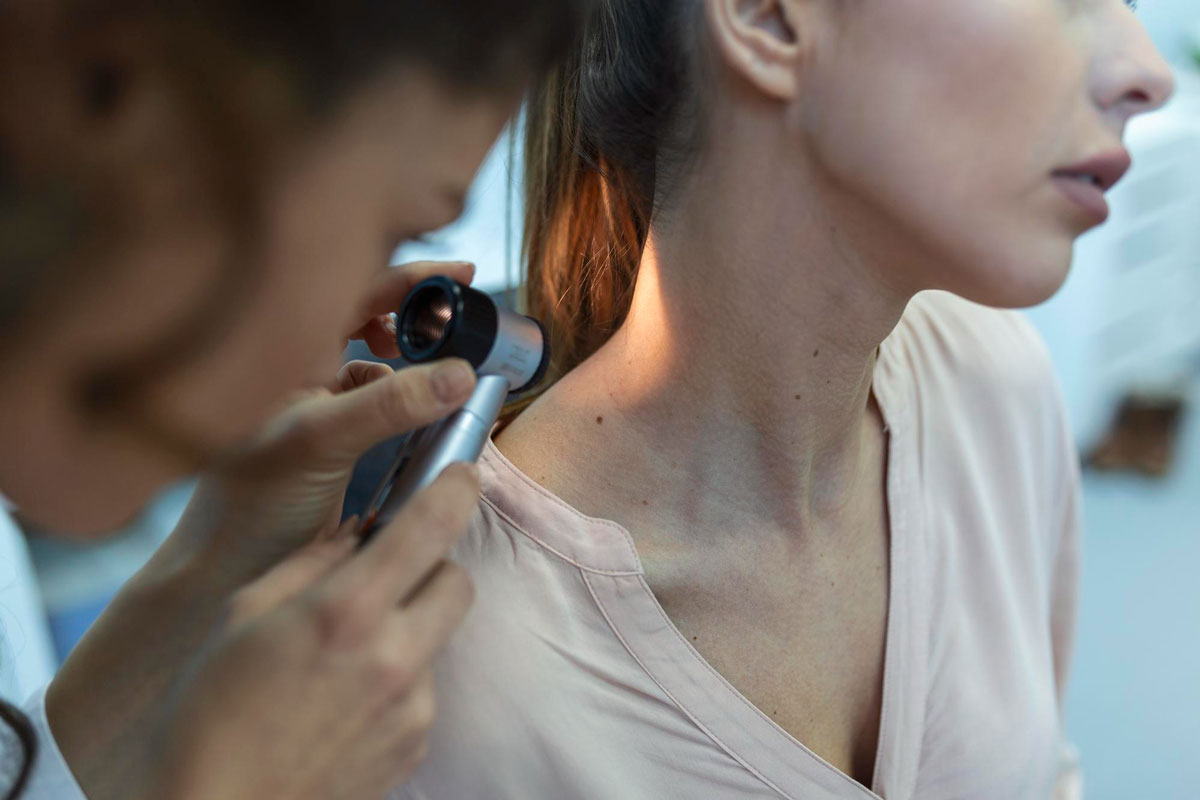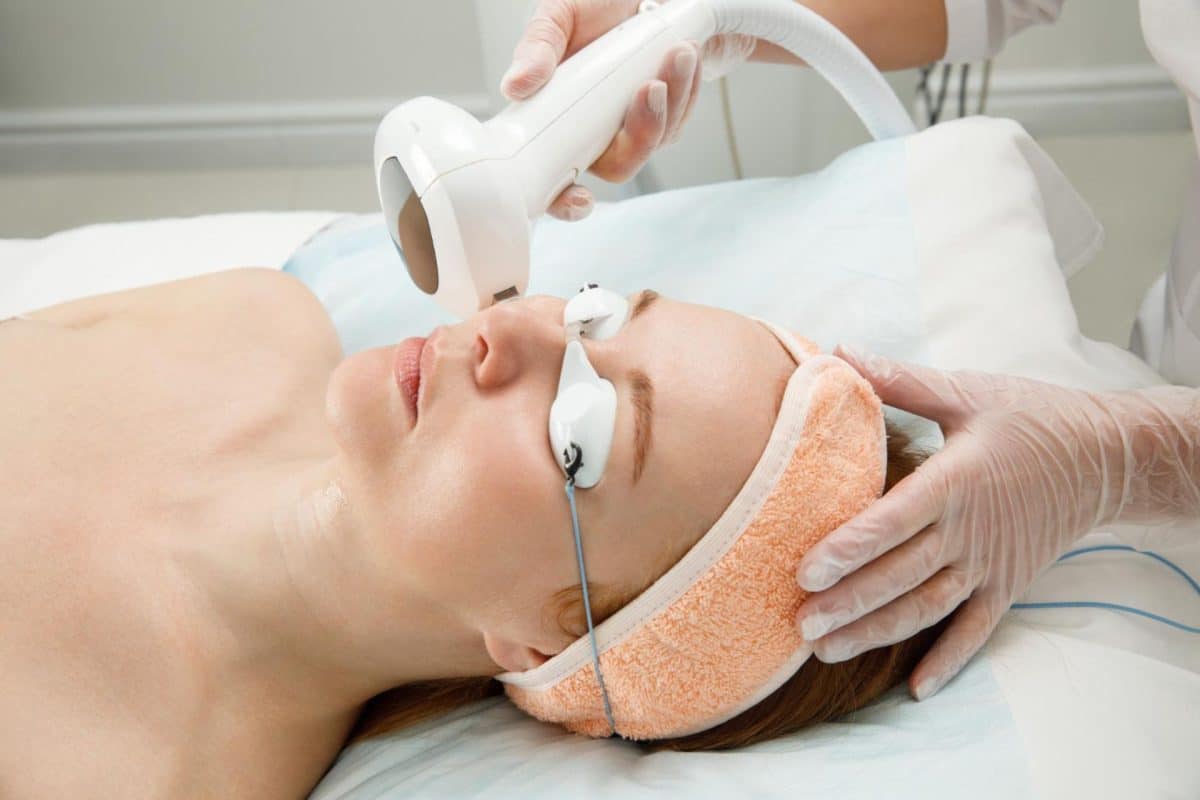Introduction to Laser Skin Resurfacing
Laser skin resurfacing is a popular, non-invasive cosmetic procedure that aims to improve skin texture, reduce the appearance of scars, and promote a youthful, radiant complexion. The 1940 nm non-ablative laser is a modern advancement in laser technology, offering skin rejuvenation with minimal downtime. Unlike ablative lasers, which remove the outer layer of the skin, non-ablative lasers work by heating the deeper layers, stimulating collagen production and encouraging the natural healing process.
Whether you are looking to improve skin smoothness, address mild scarring, or enhance overall skin tone, the 1940 nm non-ablative laser provides an effective solution with fewer risks and less recovery time compared to traditional resurfacing treatments.
How Laser Skin Resurfacing Works
Laser skin resurfacing utilises focused light energy to create controlled thermal damage in the skin’s deeper layers. The 1940 nm wavelength specifically targets water in the skin, generating heat that triggers collagen remodelling. This process helps to smooth fine lines, minimise scars, and improve overall skin quality.
Unlike ablative lasers, which physically remove layers of skin, non-ablative lasers leave the surface intact, reducing the risk of complications and shortening recovery time. As the skin repairs itself, it becomes firmer, more even-toned, and rejuvenated.
Key Benefits of 1940 nm Non-Ablative Laser
The 1940 nm non-ablative laser offers numerous advantages for those seeking a minimally invasive approach to skin improvement:
- Scar Reduction: Helps reduce the appearance of mild to moderate acne scars and surgical scars by stimulating skin regeneration.
- Fine Line and Wrinkle Reduction: Encourages collagen production to improve skin firmness and elasticity.
- Enhanced Skin Texture: Helps smooth rough or uneven skin for a softer, more refined appearance.
- Minimal Downtime: Unlike ablative lasers, which require significant healing time, this treatment allows patients to resume daily activities almost immediately.
- Safe for Various Skin Types: Suitable for different skin tones, with a lower risk of hyperpigmentation compared to some other laser treatments.
- Non-Invasive Approach: The procedure does not require incisions or extended recovery periods, making it a convenient option for busy individuals.
Who is a Suitable Candidate?
Laser skin resurfacing with the 1940 nm non-ablative laser is ideal for individuals looking to improve their skin without undergoing aggressive treatments. It is particularly beneficial for those who:
- Experience mild to moderate skin concerns such as fine lines, acne scars, or rough texture.
- Prefer a treatment with minimal downtime.
- Want a gradual improvement in skin quality rather than a drastic change.
- Have a lifestyle that does not allow for extensive post-procedure recovery.
- Seek a safe and effective option for skin rejuvenation.
However, individuals with active skin infections, severe acne, or certain medical conditions may need to consult a practitioner to determine their suitability.
Preparing for Laser Skin Resurfacing
To ensure optimal results, proper preparation is essential. Here are key steps to follow before undergoing the procedure:
- Avoid Sun Exposure: Protect your skin from excessive sun exposure for at least two weeks before treatment. Sunburnt or tanned skin may be more sensitive to laser treatment.
- Discontinue Retinoids and Active Skincare Products: Avoid using retinol, alpha hydroxy acids (AHAs), beta hydroxy acids (BHAs), and other active ingredients at least one week before your session.
- Stay Hydrated: Well-hydrated skin responds better to treatment, so ensure you drink plenty of water and use a good moisturiser in the days leading up to your appointment.
- Refrain from Harsh Treatments: Avoid chemical peels, microdermabrasion, or other intensive skin treatments for at least two weeks before your laser session.
- Inform Your Practitioner: If you are taking medications or have a history of cold sores or skin sensitivities, inform your cosmetic practitioner to ensure the safest approach.
What to Expect During the Procedure
Laser skin resurfacing with the 1940 nm non-ablative laser is a straightforward and well-tolerated procedure. Here’s what happens during the session:
- Cleansing: Your skin will be thoroughly cleansed to remove any makeup, oil, or debris.
- Numbing (if necessary): A topical numbing cream may be applied to enhance comfort, though many patients find the treatment tolerable without it.
- Laser Application: The laser device is moved across the treatment area, delivering precise pulses of light energy to stimulate collagen production.
- Mild Sensation: Some patients describe a warm, tingling sensation similar to a mild sunburn.
- Post-Treatment Care: A cooling gel or soothing serum may be applied to calm the skin immediately after treatment.
Understanding Recovery and Downtime
One of the biggest advantages of the 1940 nm non-ablative laser is its minimal downtime. While each individual’s experience may vary, most people can return to their normal activities on the same day or within 24 hours.
Post-Treatment Expectations:
- Redness and Warmth: The skin may appear slightly red and feel warm for a few hours post-treatment, similar to mild sunburn.
- Minimal Peeling or Flaking: Some individuals may notice light peeling or flaking as the skin naturally renews itself.
- Gradual Improvement: Visible results develop over several weeks as collagen production increases and the skin regenerates.
- Sun Protection is Essential: Avoid direct sun exposure and wear SPF 50+ sunscreen daily to protect the newly treated skin.
Aftercare Tips:
- Apply a gentle, hydrating moisturiser to keep the skin nourished.
- Avoid hot showers, saunas, and strenuous exercise for 24-48 hours.
- Use mild, fragrance-free skincare products to avoid irritation.
- Refrain from picking or scratching the skin to prevent complications.
Expected Results and Long-Term Benefits
The 1940 nm non-ablative laser offers gradual and natural-looking improvements in skin texture and overall quality. While some patients notice changes after a single session, multiple treatments are typically recommended for optimal results.
How Long Do Results Last?
Results can last several months to a year, depending on individual skin type, lifestyle, and skincare routine. Regular treatments may be needed to maintain the benefits, especially for concerns such as acne scars and fine lines.
Frequently Asked Questions
Is the treatment painful?
Most patients experience minimal discomfort, often described as a warming sensation. Numbing cream can be applied if necessary.
How many sessions are needed?
While some individuals see results after one session, a series of three to six treatments is often recommended for the best outcome.
Can this laser be combined with other treatments?
Yes, it can complement other skin treatments like microneedling or chemical peels for enhanced results. However, your practitioner will advise on the best combination for your skin needs.
Is there any risk of hyperpigmentation?
The 1940 nm wavelength has a lower risk of post-inflammatory hyperpigmentation, making it suitable for various skin tones. However, proper aftercare, including sun protection, is essential.
Conclusion
The 1940 nm non-ablative laser offers a safe and effective option for skin resurfacing, scar reduction, and texture improvement. With minimal downtime and long-lasting benefits, it is an excellent choice for individuals seeking a gentle yet powerful approach to skin rejuvenation. Always consult a qualified cosmetic practitioner to determine if this treatment is right for you and to receive personalised advice tailored to your skin’s needs.
If you have any further questions or wish to book a consultation, feel free to contact ISO Clinic, Upper Mount Gravatt at 07 3472 7477. A thorough skin assessment will help determine the best treatment plan for your goals.







